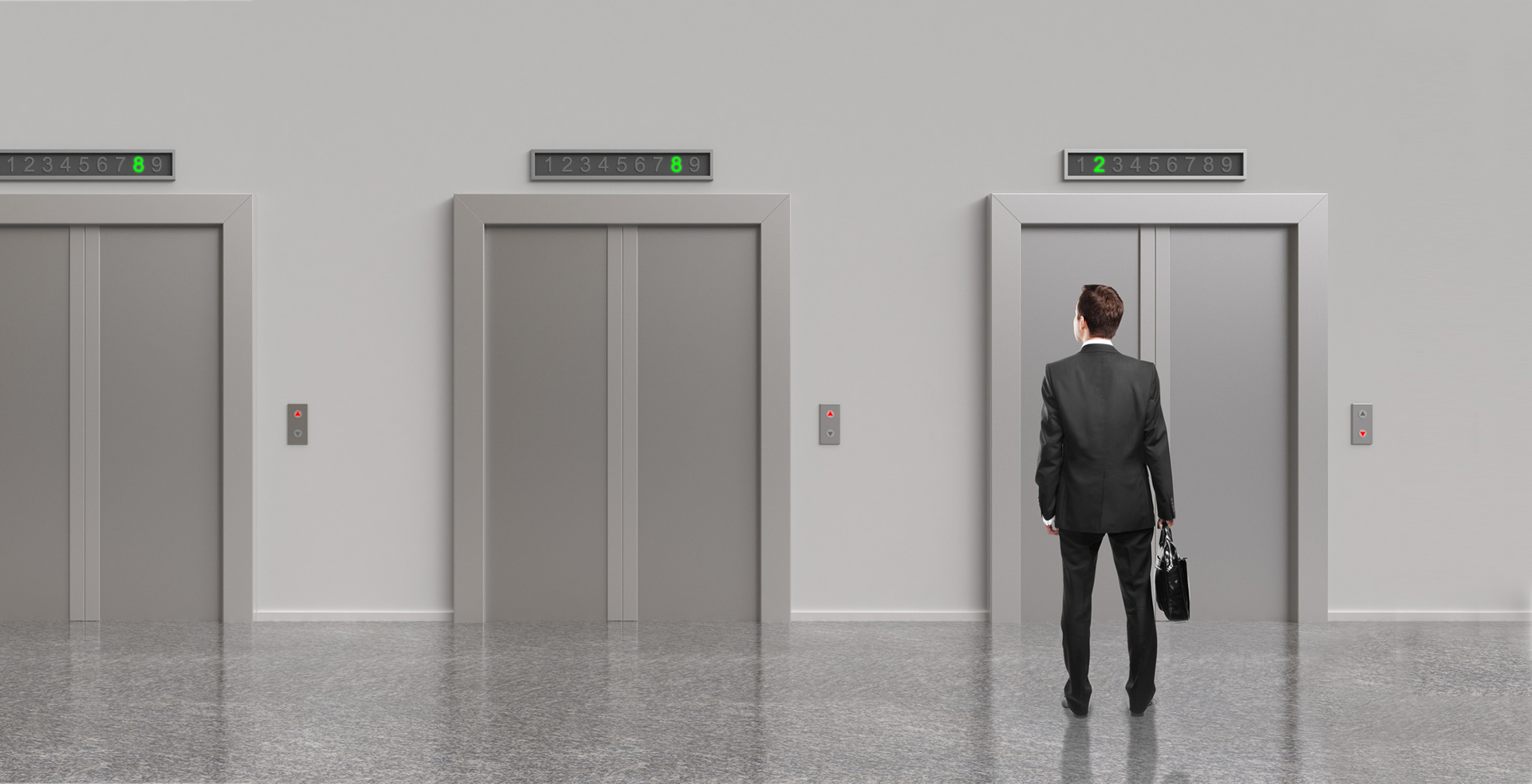Section 3
Read the passage and answer Questions 28 to 40.

Vertical transport
A DEATH DEFYING STUNT THAT SHAPED THE SKYLINE OF THE WORLD
A The raising of water from a well using a bucket suspended from a rope can be traced back to ancient times. If the rope was passed over a pulley wheel it made the lifting less strenuous. The method could be improved upon by attaching an empty bucket to the opposite end of the rope, then lowering it down the well as the full bucket came up, to counterbalance the weight.
B Some medieval monasteries were perched on the tops of cliffs that could not be readily scaled. To overcome the problem, a basket was lowered to the base of the cliff on the end of a rope coiled round a wooden rod, known as a windlass. It was possible to lift heavy weights with a windlass, especially if a small cog wheel on the cranking handle drove a larger cog wheel on a second rod. Materials and people were hoisted in this fashion, but it was a slow process and if the rope were to break the basket plummeted to the ground.
C In the middle of the nineteenth century the general public considered elevators supported by a rope to be too dangerous for personal use. Without an elevator, the height of a commercial building was limited by the number of steps people could be expected to climb within an economic time period. It was the American inventor and manufacturer Elisha Graves Otis (1811–61) who finally solved the problem of passenger elevators.
D In 1852, Otis pioneered the idea of a safety brake, and two years later he demonstrated it in spectacular fashion at the New York Crystal Palace Exhibition of Industry. Otis stood on the lifting platform, four storeys above an expectant crowd. The rope was cut, and after a small jolt, the platform came to a halt. Otis’ stunt increased people’s confidence in elevators and sales increased.
E The operating principle of the safety elevator was described and illustrated in its pattern documentation of 1861. The lifting platform was suspended between two vertical posts each lined with a toothed guide rail. A hook was set into the sides of the platform to engage with the teeth, allowing movement vertically upwards but not downwards. Descent of the elevator was possible only if the hooks were pulled in, which could only happen when the rope was in tension. If the rope were to break, the tension would be lost and the hooks would spring outwards to engage the teeth and stop the fall. Modern elevators incorporate similar safety mechanisms.
F Otis installed the first passenger elevator in a store in New York City in 1957. Following the success of the elevator, taller buildings were constructed, and sales increased once more as the business expanded into Europe. England’s first Otis passenger elevator (or lift as the British say) appeared four years later with the opening of London’s Grosvenor Hotel. Today, the Otis Elevator Company continues to be the world’s leading manufacturer of elevators, employing over 60,000 people with markets in 200 countries. More significantly perhaps, the advent of passenger lifts marked the birth of the modern skyscraper.
G Passenger elevators were powered by steam prior to 1902. A rope carrying the cab was wound round a revolving drum driven by a steam engine. The method was too slow for a tall building, which needed a large drum to hold a long coil of rope. By the following year, Otis had developed a compact electric traction elevator that used a cable but did away with the winding gear, allowing the passenger cab to be raised over 100 storeys both quickly and efficiently.
H In the electric elevator, the cable was routed from the top of the passenger cab to a pulley wheel at the head of the lift shaft and then back down to a weight acting as a counterbalance. A geared-down electric motor rotated the pulley wheel, which contained a groove to grip the cable and provide the traction. Following the success of the electric elevator, skyscraper buildings began to spring up in the major cities. The Woolworths building in New York, constructed in 1913, was a significant landmark, being the world’s tallest building for the next 27 years. It had 57 floors and the Otis high-speed electric elevators could reach the top floor in a little over one minute.
I Each elevator used several cables and pulley wheels, though one cable was enough to support the weight of the car. As a further safety feature, an oil-filled shock piston was mounted at the base of the lift shaft to act as a buffer, slowing the car down at a safe rate in the unlikely event of every cable failing as well as the safety brake.